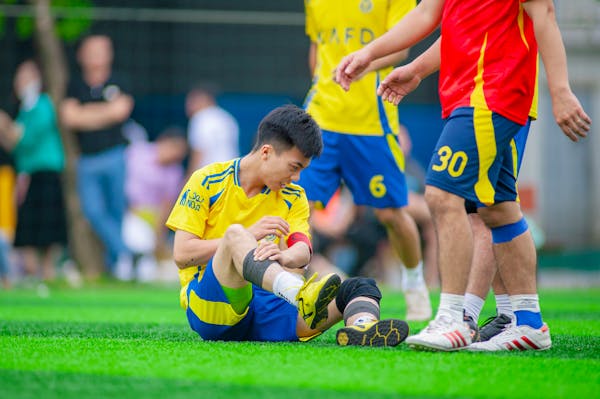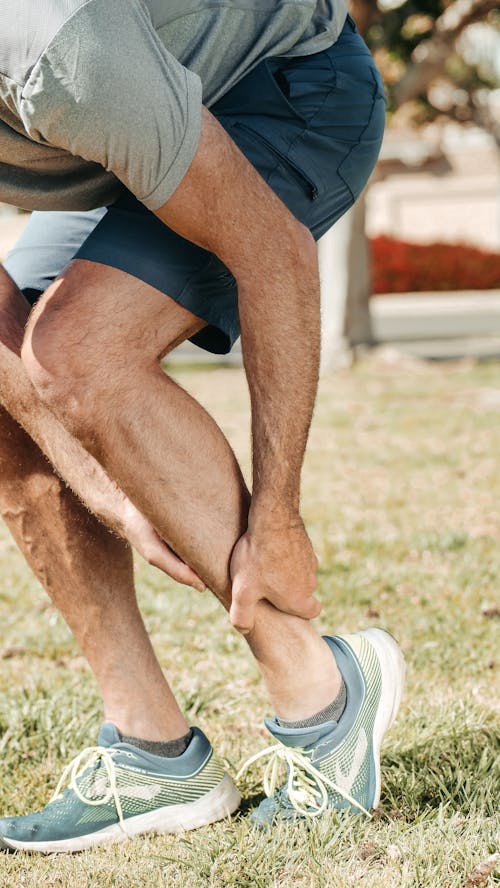- Published Date: 20-01-2025

Engaging in sports is an excellent way to stay healthy, develop teamwork skills, and maintain mental well-being. However, it also comes with risks, as physical activity can sometimes lead to injuries. Sports injuries are common among professional athletes, recreational players, and fitness enthusiasts.
Understanding their causes, prevention strategies, and treatment options can help reduce the risk and manage recovery effectively. Sports injuries occur during physical activities, often due to trauma, overuse, or improper technique.
These injuries can range from mild strains and sprains to severe conditions like fractures or ligament tears. They can affect various parts of the body, including muscles, bones, ligaments, tendons, and joints.
1. Sprains and Strains
Sprains are injuries that occur when ligaments—tissues connecting bones at a joint—are overstretched or torn. They most frequently affect areas such as the ankles, knees, and wrists, which are susceptible due to twisting motions or abrupt changes in direction during physical activities. Symptoms may include swelling, bruising, and limited mobility in the affected joint.

Strains, on the other hand, involve the overstretching or tearing of muscles or tendons, which connect muscles to bones. Commonly seen in the back, hamstrings, and arms, strains can result from heavy lifting, awkward movements, or sudden twists. Those affected usually experience pain, muscle spasms, and weakness in the injured area.
2. Fractures
Bone fractures are frequent injuries encountered in contact sports or activities that involve falls, such as skateboarding or skiing. Fractures can vary significantly in severity, from hairline fractures, where the bone is cracked but not completely broken, to complete breaks that can severely limit mobility and require medical intervention. Symptoms often include intense pain, swelling, and visible deformity in the affected extremity.
3. Dislocations
Dislocations happen when a bone is forcibly displaced from its normal position in a joint, which often occurs during high-impact collisions or accidents in sports.
The shoulder and fingers are particularly vulnerable to dislocations, leading to acute pain, swelling, and an inability to move the joint properly. This injury often necessitates immediate medical attention to realign the dislocated bone and restore function.
4. Tendon Injuries
Tendon injuries encompass conditions like tendonitis, characterized by the inflammation of tendons due to repetitive motion or overuse, and ruptures, where the tendon tears completely.
The Achilles tendon, located at the back of the ankle, is a common site for such injuries, especially among runners and dancers. Symptoms include localized pain, swelling, and, in the case of ruptures, a sudden, sharp pain followed by difficulty in walking.

5. Knee Injuries
The knee is a complex joint and is particularly vulnerable to injuries in sports, particularly those that involve sudden stops, jumps, or directional changes. Common knee injuries include anterior cruciate ligament (ACL) tears, which can lead to instability and significant pain; meniscus tears, which affect the cushioning cartilage in the knee; and patellar tendonitis, often referred to as “jumper’s knee,” where the tendon connecting the kneecap to the shin develops inflammation.
6. Concussions
Concussions are a form of mild traumatic brain injury commonly associated with contact sports such as football and hockey. They result from a hard blow to the head or a violent shake of the head, which can disrupt normal brain function.
Symptoms may manifest as dizziness, confusion, headaches, visual disturbances, or difficulties with concentration. It’s crucial to address concussions promptly, as untreated injuries can lead to long-term cognitive issues.
7. Shin Splints
Shin splints, medically known as medial tibial stress syndrome, refer to pain along the shinbone (tibia) that often arises due to repetitive actions like running or jumping.
This condition is commonly experienced by athletes who suddenly increase their training intensity or do not use proper footwear. Symptoms typically include aching or throbbing pain along the front of the lower leg, especially during physical activity.
8. Rotator Cuff Injuries
Injuries to the rotator cuff, a group of muscles and tendons that stabilize the shoulder, are prevalent among athletes engaged in sports that require repetitive overhead motions, such as swimming, tennis, and baseball.
These injuries can range from tendonitis, presenting as shoulder pain and tenderness, to full-thickness tears that severely limit shoulder function. Athletes may experience persistent pain during activity, weakness in the arm, and difficulty lifting objects overhead.

While sports injuries are prevalent, they are largely preventable with the right precautions. Understanding their causes, recognizing early signs, and seeking timely treatment are crucial steps to recovery.
Whether you’re a professional athlete or a fitness enthusiast, prioritizing safety and self-care ensures you can enjoy the benefits of sports while minimizing risks. By maintaining a balance between ambition and caution, you can continue to pursue your athletic passions without compromising your health. Stay active, stay safe!